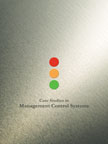Operations Management
 |
Details
Textbook:
Pages : 329;
Paperback;
210 X 275 mm approx.
Workbook:
Pages :
239; Paperback;
210 X 275 mm approx, Sample Applied Theory Questions
Courier charges extra
Pricing
Textbook Price: Rs. 900;
Workbook Price: Rs. 700;
Available only in INDIA
Detail Table of Contents
Click below to view
HTML
Project Management : Chapter 20
SUMMARY: A project is defined as a group of activities with a definite starting and ending point, which is undertaken to achieve a specific objective. Project management assists organizations in coordinating and planning the usage and employment of resources required for achieving project objectives. With the increase in number of projects and number of activities in a project, the task of scheduling and assigning resources to all these activities has necessitated the use of techniques like PERT and CPM. CPM is used to find out the total duration of the project and identify the activities that are a part of the critical path. PERT employs a more probabilistic approach to finding out the project duration. Both PERT and CPM are based on networks and define the interrelationships between different activities of a project. The two networking conventions used to illustrate the relationship between different activities are the Activity-on-node and Activity-on-arrow. |
|
Project crashing is the process of reducing the project duration by employing additional resources. These additional resources include more manpower, more capacity, new equipment.
The ultimate aim of project management is to accomplish project objectives within the time and cost constraints.



